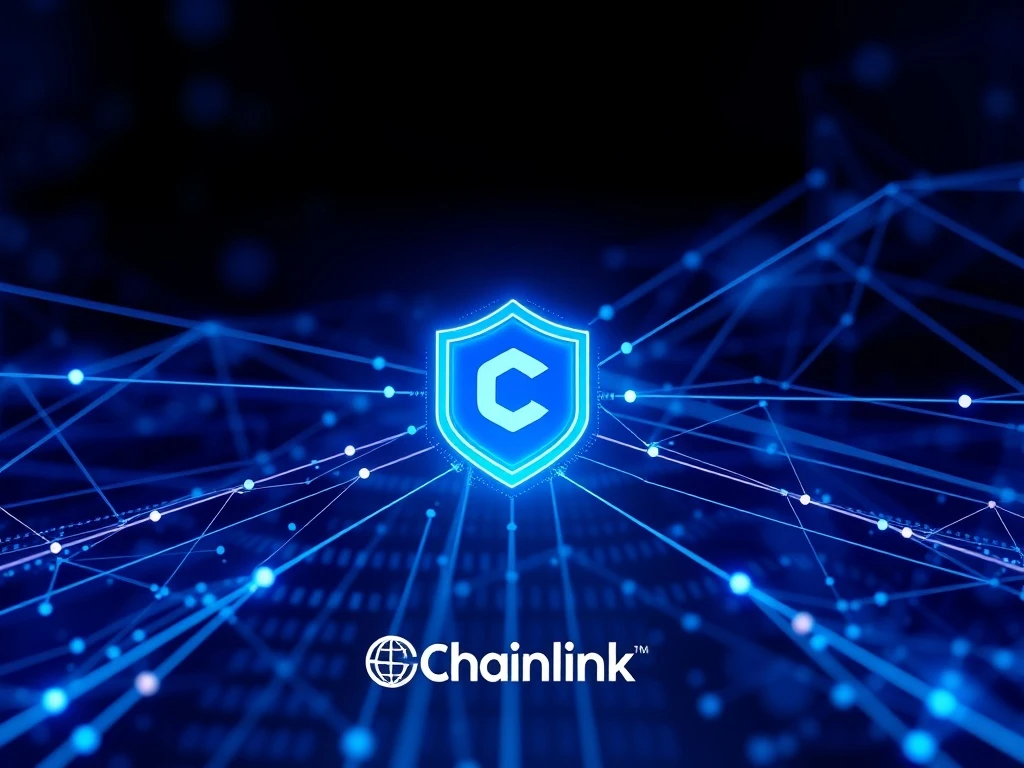Blockchain Compliance: Revolutionary Tools Slash TradFi Costs

The world of finance is on the cusp of a profound transformation, driven by the innovative power of blockchain technology. For decades, traditional finance (TradFi) has grappled with complex, fragmented, and often exorbitant compliance processes. These inefficiencies have not only resulted in billions of dollars in operational costs but have also acted as a significant barrier to entry for new capital. However, a new era is dawning, promising to revolutionize how financial institutions manage regulatory obligations. As Chainlink co-founder Sergey Nazarov recently highlighted, advanced blockchain compliance tools are poised to drastically cut TradFi costs, making financial operations faster, cheaper, and more accessible than ever before.
The Unseen Burden: Understanding Traditional Finance Costs
For financial institutions globally, the burden of regulatory compliance is immense. From anti-money laundering (AML) to know-your-customer (KYC) protocols, these essential safeguards often rely on manual, multi-layered processes. This fragmentation leads to significant operational bottlenecks and escalating expenses. In 2023 alone, financial crime compliance for institutions in the US and Canada exceeded $60 billion, a staggering figure that underscores the scale of the problem. Sergey Nazarov emphasizes this pain point, stating, “Compliance is an inefficient part of the traditional finance industry that a lot of people are not happy about, including identity verification of AML and KYC.”
The stark reality is that these traditional systems are not just slow and costly; they also deter innovation and limit the flow of capital. Nazarov firmly believes that the blockchain industry possesses the inherent capabilities to perform these same compliance functions “ten times faster and cheaper” than current TradFi methods. This isn’t just about minor savings; it represents a fundamental shift that could unlock vast amounts of institutional capital, paving the way for unprecedented digital asset adoption.
Chainlink ACE: A Game-Changer for Blockchain Compliance
Responding directly to these inefficiencies, Chainlink recently unveiled its Automated Compliance Engine (ACE). Launched on June 30, ACE is designed as a modular and standardized framework, meticulously crafted to manage regulatory compliance across both traditional finance and decentralized finance (DeFi) protocols. This groundbreaking system aims to streamline the entire compliance lifecycle, from identity verification to transaction monitoring.
Currently in early access for select institutions, ACE is not just an incremental improvement; it’s a foundational shift. Chainlink projects that ACE could facilitate the entry of an astounding $100 trillion worth of new capital into the blockchain economy. By providing a unified, on-chain solution for complex regulatory requirements, Chainlink ACE significantly reduces the manual overhead and associated costs that plague existing systems. It embodies the promise of efficient blockchain compliance, offering a pathway for institutions to confidently engage with digital assets while adhering to stringent regulatory standards.
RWA Tokenization: Unlocking New Efficiencies
Beyond direct compliance tools, blockchain technology is also transforming how traditional assets are owned and traded through real-world asset (RWA) tokenization. This process involves converting tangible assets—such as real estate, commodities, or equities—into digital tokens on a blockchain. The inherent efficiencies of blockchain technology mean that investing in these tokenized traditional assets can become substantially cheaper than through conventional means.
Nazarov points out a compelling economic advantage: “If the compliance or the identity costs or the compliance of renewal and management costs in the blockchain format and wrapper are 5 to 10x cheaper, then that’s a huge advantage.” This cost reduction, driven by the transparency and automation of blockchain, makes RWA tokenization an increasingly attractive proposition for institutional investors. Chainlink’s ACE framework further supports this by enabling the launch of tokenized RWAs with built-in compliance features, significantly lowering the friction and expense for institutions exploring this burgeoning market. Data from RWA.xyz shows that on-chain RWAs have already reached a cumulative all-time high of over $25.4 billion, excluding stablecoins, demonstrating growing interest and utility.
Driving Digital Asset Adoption Across Institutions
The confluence of advanced blockchain compliance solutions like Chainlink ACE and the growing potential of RWA tokenization is creating an undeniable pull for institutional capital. The ability to dramatically reduce TradFi costs associated with compliance and asset management removes a major hurdle for large-scale financial players. As Nazarov aptly puts it, solving these inefficiencies could “unblock a bunch of institutions from being able to put capital on-chain.”
Key Benefits of Blockchain-Enabled Compliance & RWAs:
- Significant Cost Reduction: Up to 10x cheaper than traditional methods for compliance and asset management.
- Increased Speed & Efficiency: Automated processes lead to faster transaction and verification times.
- Enhanced Transparency: On-chain records provide immutable and auditable trails.
- Reduced Friction: Streamlined workflows make it easier for institutions to enter digital asset markets.
- Unlocking New Capital: Facilitates the movement of vast sums of institutional funds onto blockchain networks.
Challenges and the Path Forward:
While the benefits are clear, the journey towards widespread digital asset adoption isn’t without its challenges. Regulatory clarity continues to evolve, and interoperability between existing TradFi infrastructure and new blockchain solutions remains a key focus area. Education within traditional financial institutions is also crucial to bridge the knowledge gap and foster confidence in these new technologies. However, the foundational tools and frameworks are now in place, ready to support this transition.
The Future of Finance is Compliant and On-Chain
The vision presented by Chainlink’s co-founder Sergey Nazarov paints a clear picture: blockchain technology is not just about cryptocurrencies; it’s about fundamentally redesigning the plumbing of global finance. By addressing the critical issue of compliance costs and enabling efficient RWA tokenization, blockchain is set to usher in an era of unprecedented efficiency, transparency, and accessibility. Solutions like Chainlink ACE are pivotal in bridging the gap between traditional finance and the decentralized world, ensuring that the future of finance is not only innovative but also robustly compliant. Institutions that embrace these revolutionary tools will be at the forefront of this transformation, ready to capitalize on the vast opportunities that lie ahead in the rapidly expanding digital asset landscape.







